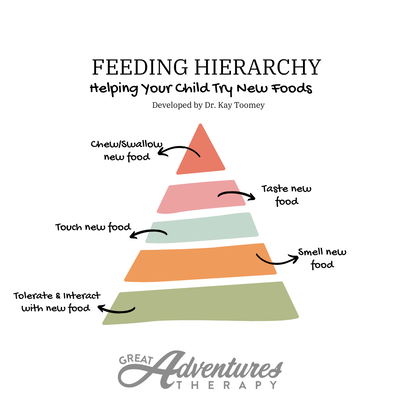|
If you're looking for some fun things to do with the kiddos during the holiday season, we've complied a quick list of some of our favorites! Let us know which ones you do and what you think! 1. Zoo Knoxville Zoo Lights. Zoo animals and Christmas lights. Need we say more?
2. The Elf On The Shelf Adventure. This is such a cute scavenger hunt around downtown! Do it all or do it in pieces- either way it's fun for everyone! Pick up a North Pole Pass at the Mass General Store or the Visit Knoxville website to guide you step by step! 3. Peppermint Trail in Downtown Knoxville. Look for the peppermint sticker on the windows of businesses downtown- these places will have a special holiday treat! A list of participating businesses can be found on the website. 4. Holidays on Ice in Market Square. Family, hot cocoa, and ice skating is a Christmas Tri-fecta! 5. Cruze Farm "Moo-vie Nights!" This is an adventure your family will cherish all season! Friday and Saturday nights in December you can enjoy a hot pizza from The Pizza Barn, pick up some delicious Cruze Farm ice cream, and park in the parking lot for a movie on the big screen! Visit their website for more information. If you're willing to drive a bit for extra fun, check out these places! 1. Dollywood's Smoky Mountain Christmas (Pigeon Forge) 2. Christmas At Biltmore (North Carolina) 3. Shadrack's Christmas Wonderland (Kodak) 4. Anakeesta Enchanted Winter (Gatlinburg) 5. Christmas at Gaylord Opryland (Nashville) 6. The Polar Express (North Carolina) 7. North Pole Limited Christmas Train (Chattanooga) From our families to yours- Happy Holidays!
0 Comments
"My child just won't try new foods!" "I keep telling them to just take one bite but they refuse!" "My child would sit at the table all day before they would take a bite of what I asked them to, so I just stopped trying." Exhausted mamas- does this sound like you? If so, part three of this healthy eating series is going to be your favorite. In this post, we will talk about a Sensory Hierarchy: what it is, how it works, and how to use it in your home. Feeding Hierarchy- What is it? A feeding hierarchy, developed by Dr. Kay Toomey, is designed to enable children to tolerate and interact with new foods before actually eating them. This grants the child permission to feel/be in control of their environment, allowing them to feel good about the choices being made during meals. Feeding Hierarchy- How does it work? There are seven steps to the feeding hierarchy: 1. Tolerate/Interact With Food. The child is able to help prepare meals with the new food, meaning they can stir a pot, use a utensil to put it on a plate, etc., and tolerate it sitting on a plate in front of them during a meal.
2. Smell Food. This may be related to smelling the individual food item or simply tolerating the smell of the food in the air during mealtimes. 3. Touch Food. The child is willing/able to use their fingers to touch the food and explore the temperature, the texture, and the way it feels on their fingertips/hands. Once this is accepted, touch is explored moving up the body from the fingertips to the mouth, moving as slowly as needed for the child to accept each phase of this step. 4. Taste Food: This part of the process will allow for touch in and around the mouth, moving as quickly or slowly as tolerated by the child. For example, one food may be tolerated by licking their lips after food is placed on the lips, while another food may be tolerated by biting a piece from a whole, chewing once, and spitting the item into an "all done" bowl. Each child is different, and each food may require different steps. 5. Eat Food: This step involves the child placing the food in their mouth, chewing, and swallowing the food. Feeding Hierarchy- How can I use this at home? Each child is different. Each food is different. Feeding is a complex process and therefore requires a process that is tailored to your individual child. If you would like more information regarding how to use a feeding hierarchy to target new foods at mealtimes with your child, please contact our office. We'd love to talk with you more about how to implement this at home for your child.  In the last post, we talked about ways to create successful mealtime routines, such as creating a routine and setting expectations. If you missed this blog post- go back and read it! In part two of this three-part series, we will talk about how to "create the plate" that will set your kiddo up for success! Create The Plate Every successful mealtime begins with the plate. Here are a few things you can do when preparing your child's plate that allows your child to be involved, encourages conversation for trying new foods, and gives your child the control they need when trying new things and making healthy choices.
 As professionals that identify and treat a variety of pediatric feeding disorders, we are often asked, “How can I help my child eat better? How can I help them try new foods? Will I ever be able to cook one meal that everyone will eat?” One of the most important things you can do for your child is to establish good mealtime routines. In part one of this three-part series, we will talk about a few things you can do to create successful mealtimes for your family. Create a Routine Research supports that sitting at the table and eating together creates family bonding and an overall healthy lifestyle. It is really important to carve out this time when you can. Start with picking one meal time per day- lunch or dinner is a great place to start- and sit at the table for this meal. Do this consistently so that sitting at the table for that meal is a learned behavior, which then becomes a habit. Work up to more meals at the table together as you establish a routine. All meals should take place in appropriate seating for the child’s age and at a table without distractions, meaning music and iPads/television should not be used during mealtimes. Set Expectations On average, a child eats three meals per day (breakfast, lunch, and dinner) and one to two snacks per day. For the three main meals we eat daily, the average time frame needed to complete a full meal is approximately 20 to 30 minutes. Teach your child how to sit at a table for meals with a 20 to 30 minute time frame in mind. Start a meal by saying, “it is time to eat. Let’s all sit at the table.” Refrain from getting up once you are finished or moving on to other tasks, but rather stay seated as a family until everyone is finished. Set a timer for 20 minutes, and enjoy a meal together. When the timer goes off, this is a 5 minute warning that the meal time is almost over. You can simply say, “oh that means our meal is almost done! We only have 5 more minutes to eat what is on our plates before our meal is finished.” Set a timer for 5 more minutes to signal that mealtime is over. When the 30 minute timer has gone off, the meal time is over. Have your child help clear the table and clean up as needed. Some children have a hard time with this in the beginning, and it is OK if you need to start with a decreased time and build up to the full 20-30 minutes. Each family may need to begin at a different starting point, so please do what is best for your family and work up to the full time. If you have concerns about your child’s mealtimes, willingness to try foods, or other signs of feeding disorders, please contact our office. We would love to talk with you about ways we can help! |
AuthorChariti is a licensed/certified Speech Language Pathologist in Knoxville, Tennessee and owner of Great Adventures Therapy. LLC. Archives
December 2022
Categories |
9000 Executive Park Drive Suite #A205
Knoxville, TN 37923
Phone: (865) 236-0103
Fax: (865) 674-5447
[email protected]
Knoxville, TN 37923
Phone: (865) 236-0103
Fax: (865) 674-5447
[email protected]



 RSS Feed
RSS Feed
